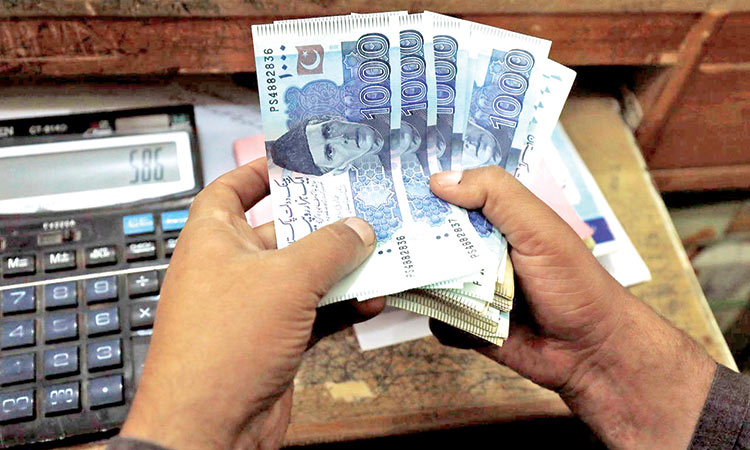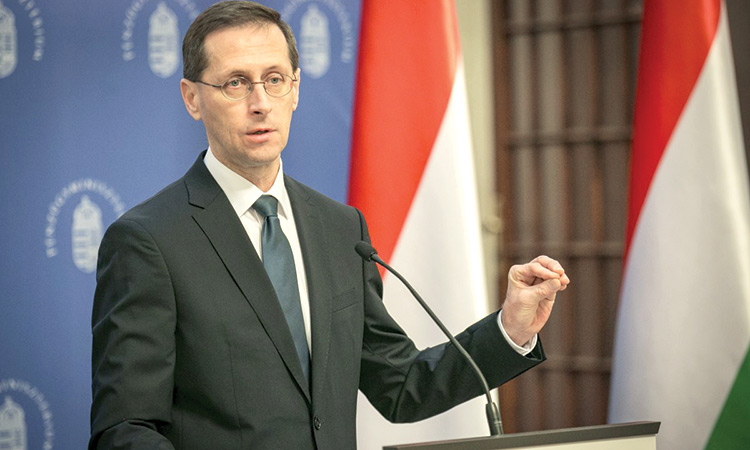Hungary central bank’s inflation index to peak at 3.8 per cent in Q4

A vendor at a food market in Budapest, Hungary. Reuters
On Tuesday the central bank (CB) left interest rates unchanged and kept its dovish stance despite raising its inflation forecasts for the coming years, after the European Central Bank (ECB) flagged further easing earlier this month.
Deputy Governor Marton Nagy told Reuters on Wednesday that the economy was in a high-pressure phase with strong wage and output growth, but the risk of overheating was very low despite inflation nearing the top of its 2-4% target range.
“Core inflation excluding indirect tax effects is expected to rise slightly in the months ahead,” the NBH said on Thursday.
“However, due to the external disinflationary effects - stemming mainly from the economic slowdown in the euro area - it will gradually fall to 3% from the end of the year.”
The bank forecasts the indicator it uses as the basis of monetary policy decisions at an average 3.6% this year, dropping from the peak of 3.8% in the fourth quarter to 3.5% next year and 3.1% in 2021.
It sees private sector gross wage growth slowing to 9.6% next year and to 8.9% in 2021 from this year’s 10.9%, driven by a fall in unemployment to record lows and a shortage of skilled workers, which has buoyed wage growth over the past years.
However, it said a further tightening in the domestic labour market and continued double-digit private sector wage hikes in the coming years would be consistent with tighter monetary conditions.
Another alternative scenario discussed by the rate-setting Monetary Council reckons with persistently lower external demand and low imported inflation, which would be consistent with looser monetary conditions, the bank said in the report.
Deputy Governor Nagy said on Tuesday that “all options” were on the table for the bank’s next possible policy move, as risks to its economic outlook were evenly balanced.
Hungary’s economy is in a high-pressure phase with strong wage and output growth, but the risk of overheating is very low as investments are booming and it is running a current account surplus, a senior central banker said on Wednesday.
Nagy said the bank was committed to reaching its inflation target over its forecast horizon of 5 to 8 quarters, which was also key to guarding against overheating.
The bank targets 3 percent inflation with a tolerance band of a percentage point on either side. But Nagy said the bank would not react automatically if tax-adjusted core inflation - the bank’s key measure — rose to 4%. It reached 3.7% in May.
“What matters is not whether it reaches the edge of the target band but the reasons why — and how that would affect the inflation outlook,” Nagy said in an interview.
The central bank left interest rates unchanged on Tuesday and said its policy would continue to be accommodative and cautious, with data in the second half of 2019 decisive in assessing the inflation outlook.
Some analysts have warned of rising inflationary pressures, with Morgan Stanley calling them “clear and widespread”.
Nagy said inflation expectations were “anchored around the bank’s target”, and that upward and downward inflation risks were at present evenly balanced.
“So there is no second-round (inflation) impact and we think that there won’t be either,” he said, adding that as a base case scenario the bank did not expect tax-adjusted core inflation to overshoot its target range.
Nagy said the bank would continue to assess data and the outlook every three months, based on the quarterly inflation report, which “has worked for us”. The next report is due in September.
In the first quarter, Hungary’s economy expanded an annual 5.3% and wage growth hit double digits. But investments are also buoyant, having surged by 25% in 2018, and the budget deficit is low and net external debt is falling. Productivity was also increasing, Nagy said.
“There is a very fine line” separating a high-pressure economy from an overheated economy, Nagy said.
Overheating would be on the cards “if we had a twin deficit problem and the investment rate started to drop,” but the risk of that was “very low”, he said. In that context the bank was also watching the current account surplus. While this had been shrinking in the past two years due to a deteriorating trade balance, it was booming investments rather than rising consumption that had led to a surge in imports, and exports remained strong.
Reuters







